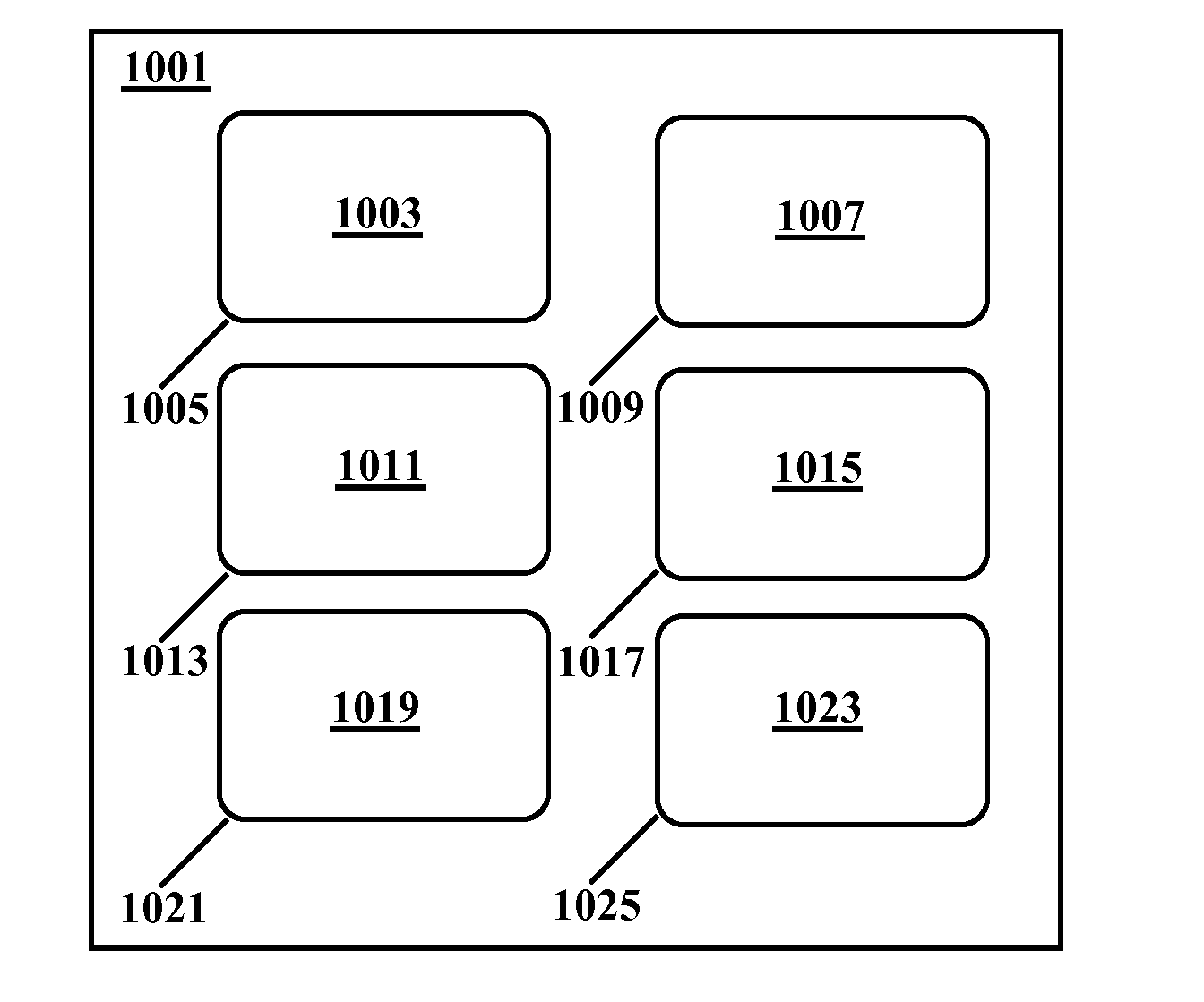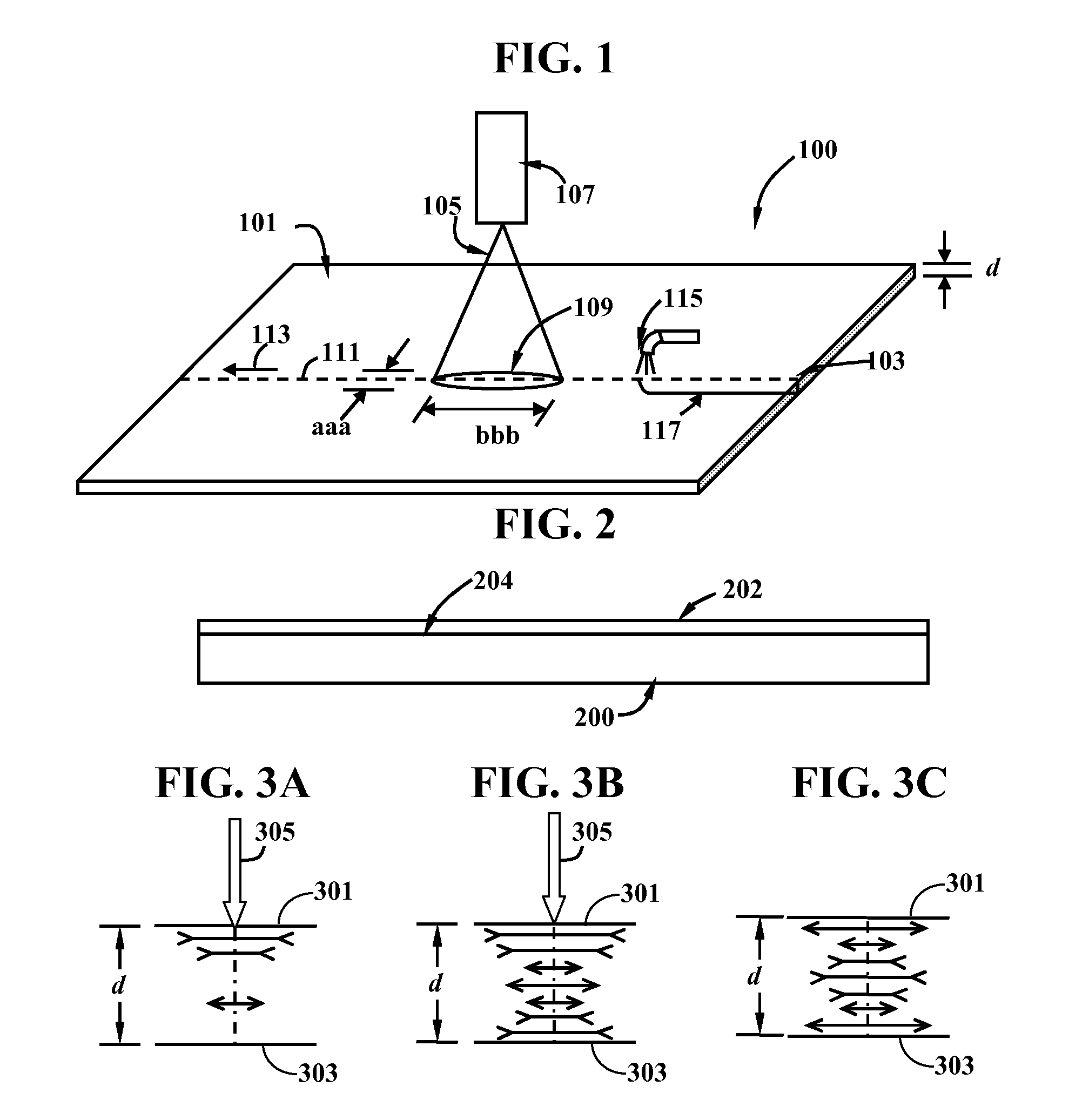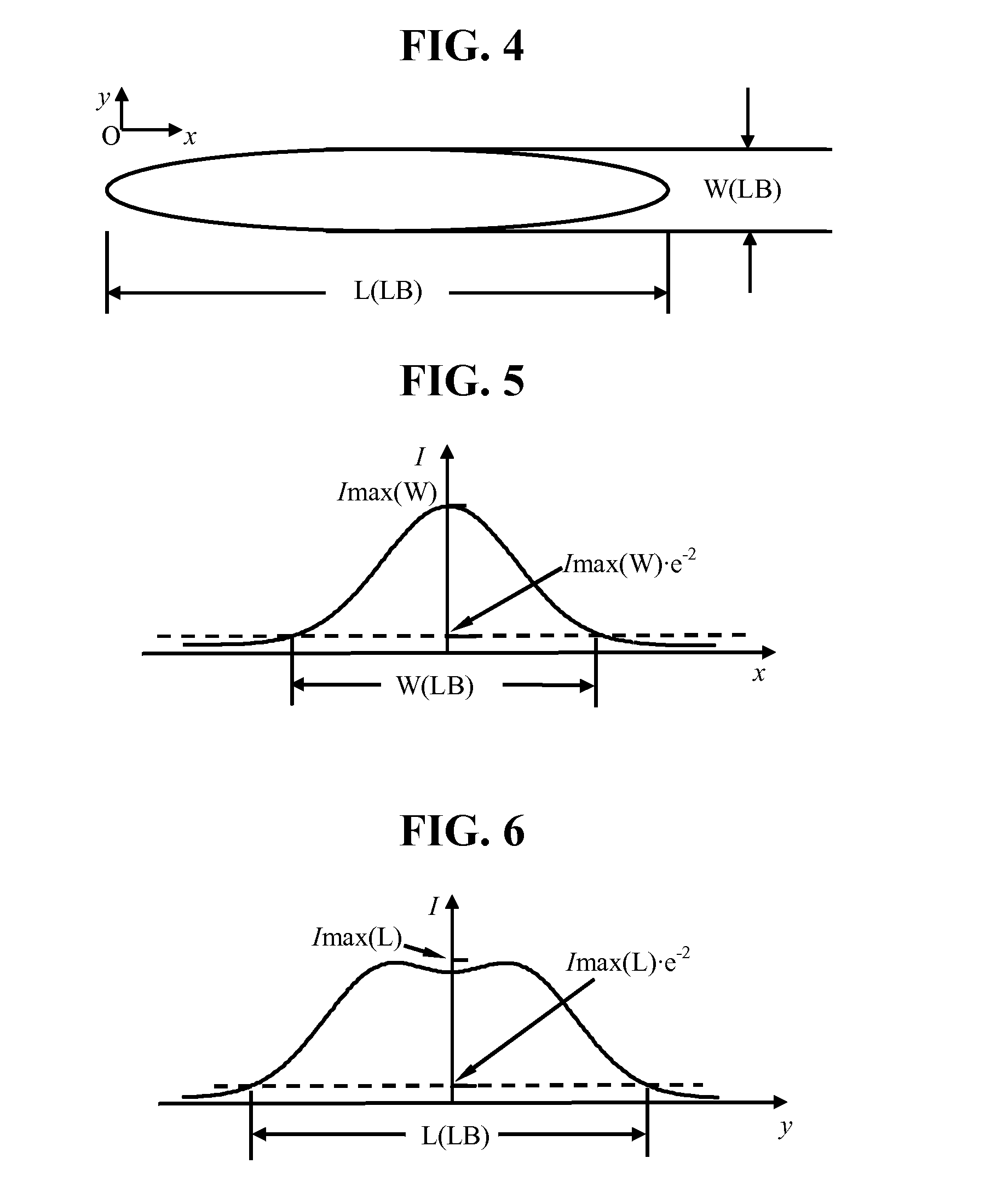Laser cutting method
a cutting method and laser cutting technology, applied in the direction of glass making apparatus, manufacturing tools, welding/soldering/cutting articles, etc., can solve the problems of score-and-break process, inability to consistently and reliably produce glass sheets with high-quality edges, and pre-formed initiation defects on glass to propagate into a score-line with a given depth, etc., to achieve easy production, reduce the number of process steps, and simplify the cutting process
- Summary
- Abstract
- Description
- Claims
- Application Information
AI Technical Summary
Benefits of technology
Problems solved by technology
Method used
Image
Examples
examples
[0144]The following non-limiting examples further illustrate the present invention.
[0145]Redrawn glass sheet with different glass thickness (100 μm, and 200 μm) were cut with the fast scanning circular CO2 laser beam cutting method. The laser beam was line scanned over a length of ˜200 mm with a scanning speed of 20,000 mm / s. The defocused laser beam has a diameter of ˜1 mm and an average power density of about 18 W·cm−2. Cut glass sheet samples, with a width of 20 mm and a length of 100 mm, was tested with the 2-point bending method for strength in terms of failure stress. FIG. 11 shows the Weibull plot of the measured result from the 2-point bending method. The minimum failure stress of the test specimens was 120 MPa for redrawn glass having a thickness of 200 μm, and 160 MPa for redrawn glass having a thickness of 100 μm. In comparison, mechanically cut samples at thicker thickness (>0.3 mm) typically have an edge failure stress of ˜100 MPa in 4-point bending test. Thus, the thin...
PUM
| Property | Measurement | Unit |
|---|---|---|
| thickness | aaaaa | aaaaa |
| distance | aaaaa | aaaaa |
| speed | aaaaa | aaaaa |
Abstract
Description
Claims
Application Information
 Login to View More
Login to View More - R&D
- Intellectual Property
- Life Sciences
- Materials
- Tech Scout
- Unparalleled Data Quality
- Higher Quality Content
- 60% Fewer Hallucinations
Browse by: Latest US Patents, China's latest patents, Technical Efficacy Thesaurus, Application Domain, Technology Topic, Popular Technical Reports.
© 2025 PatSnap. All rights reserved.Legal|Privacy policy|Modern Slavery Act Transparency Statement|Sitemap|About US| Contact US: help@patsnap.com



